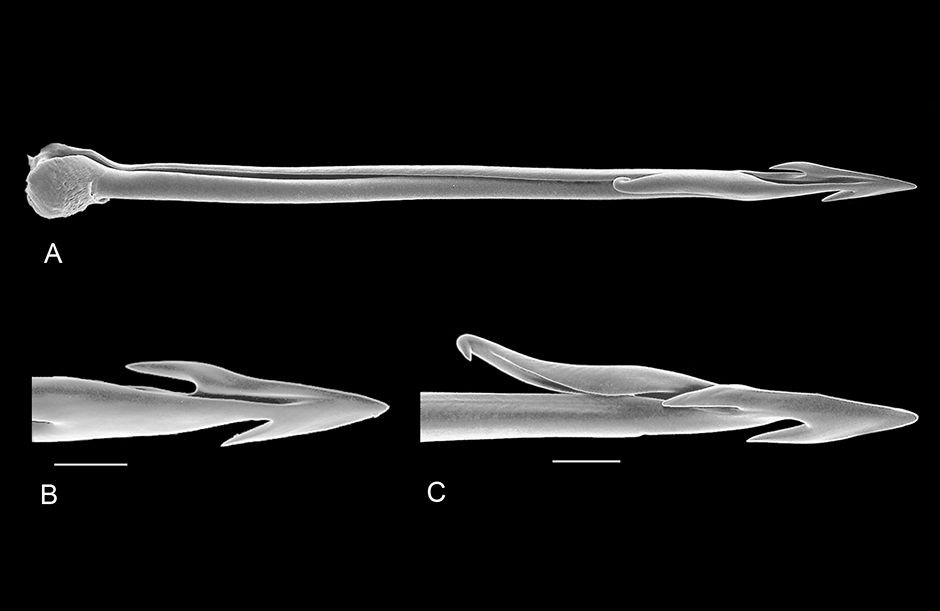In addition to producing some of the most potent venoms in nature, cone snails are now known to deliver one of the fastest predatory strikes in the animal kingdom. In a paper recently published online in Current Biology, Joseph R. Schulz from the Occidental College in Los Angeles and his collaborators have shown that the strike by the radular tooth of the fish-hunting Cat Cone, Conus catus, reaches speeds comparable to those of a bullet being fired from a pistol. The entire strike happens in less than 100 microseconds (a microsecond is one millionth of a second), with accelerations exceeding 280,000 m/s2 (the metric system unit for acceleration is meters per second square; for comparison, a car acceleration is about 3 to 4 m/s2.) Radular teeth of cone snails resemble harpoons, with the hollow shaft acting as a conduit to deliver venom to the prey (see enclosed scanning image of the tooth of Conus catus). Fish-hunting cone snails use fast-acting toxins (the venom) and a super-fast venom delivery system. Cat Cones (and probably other fish-hunting species) have a unique mechanism that allows for the high-pressure build-up of venom inside the proboscis. A protuberance on the tooth base holds the tooth in place, held by a latch inside the proboscis (see attached images). When contact with the prey is made and pressure overcomes the forces of the latch, the tooth is released, much like a bullet shooting through a gun barrel, delivering venom through the prey’s skin. Read more the work being done at Schulz’s lab here. And check a previous article in the Curator’s Corner explaining the formation of cone snail teeth here.
 Strike mechanism in the Cat Cone, Conus catus. (A) Diagram of proboscis tip showing strike sequence, “C” is the latch that holds the tooth (in blue) base helping with high-pressure build-up. (B) Composite showing actual tooth release sequence upon contact with prey; * is the protuberance on tooth base. From Schulz et al, Current Biology 29, R775–R789, August 2019.
Strike mechanism in the Cat Cone, Conus catus. (A) Diagram of proboscis tip showing strike sequence, “C” is the latch that holds the tooth (in blue) base helping with high-pressure build-up. (B) Composite showing actual tooth release sequence upon contact with prey; * is the protuberance on tooth base. From Schulz et al, Current Biology 29, R775–R789, August 2019.  Scanning electron micrographs of the Cat Cone’s tooth. Tooth length about 2.5 mm (0.1 inch). Illustration courtesy of Alan J. Kohn, University of Washington.
Scanning electron micrographs of the Cat Cone’s tooth. Tooth length about 2.5 mm (0.1 inch). Illustration courtesy of Alan J. Kohn, University of Washington.


